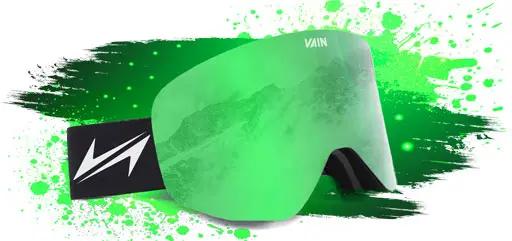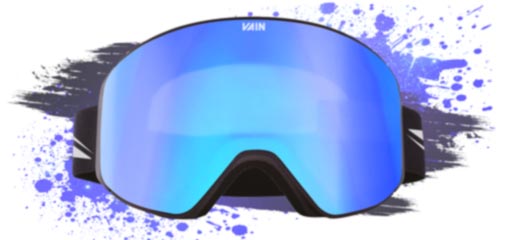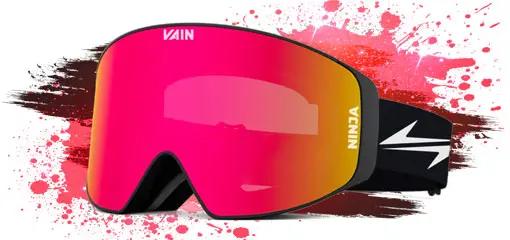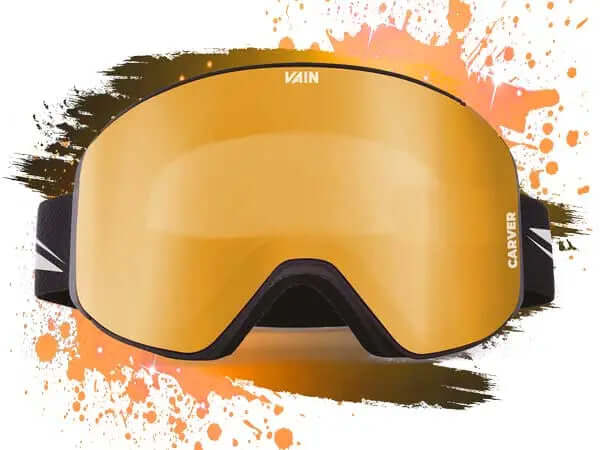Ultimate UV400 & CE Category Guide
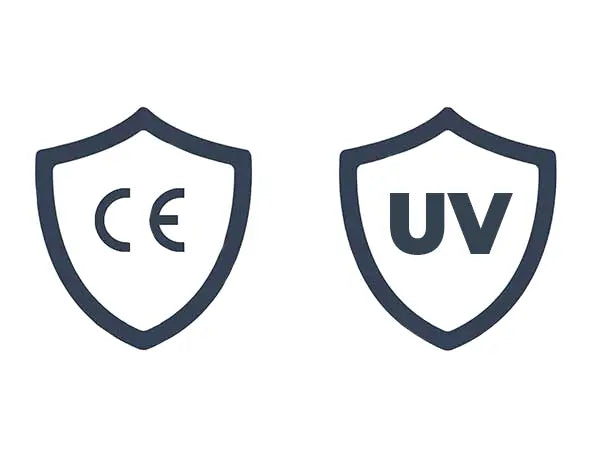
Lovely, the sun is out and no clouds are in the way. But wait, did you think about your eye protection? Do you even know how to protect your eyes? Don't worry anymore, because we will tell you everything there is to know about protecting your eyes from harmful sunlight in this blog.
After reading the topics above, you will know everything about protecting your eyes from the sun.
1. Why do you need to protect your eyes from sunlight?
Did you know that about 5% of sunlight is harmful to the eyes? We'll explain you why and whatever else you need to know about sunlight and protecting yourself against it.
How can UV rays damage your eyes?
Extended exposure to UV rays alters the proteins in the lenses, resulting in the development of cataracts and deteriorating eyesight. As time passes, cataracts can cause blurred or hazy vision, as well as a reduction in color perception. Skin cancers such as basal cell carcinoma and squamous cell carcinoma on the eyelids are associated with UV exposure.
What UV rays are there?
We divide the UV rays in UVA, UVB, UVC and HEV. Each type of ray has its own wavelength. it's good to know that only 5% of the UV rays can reach us. 95% of the UV rays are blocked by earths ozone layer. !00% of the UVC rays are blocked. We will explain each type of UV rays:
- UVA (wavelength 320-400nm) is 95% of the UV on earth and is the primary cause of sun allergies.
- UVB (wavelength 280-320nm) is 5% of the UV on earth and is responsible for sunburn and secondary cause for sun allergies.
- UVC (wavelength 100-280nm) is blocked out by the ozone layer.
- HEV (wavelength 400-500nm) appears as visual blue light.
The following picture will visualise the UV rays penetrating the ozon layer and UV400 lens.

What is HEV light?
High Energy Visible Light is also called HEV or HEVIS light. HEV light is in the visual spectrum of light which means we can see it. HEV light is the same wavelength as Turquoise and blue light and therefore appears as theses colors of light. Due to it's high energy it can be harmfull for the eyes. Remember switching on the light in the dark and squinting your eyes? that's mainly caused due to the HEV light.
What is UVA light?
UVA light has wavelengths between 320 and 400nm and is responsible for 95% of the UV light. The type of UV light is smaller and can penetrate deeper into the skin. It plays a great role in skin aging, wrinkling and a minor role in skin cancer.
What is UVB light?
UVB light has wavelengths between 280 and 320 nm and is responsible for 5% of the UV light. The type of UV light causes sunburn and is the primary cause of skin cancer.
What is UVC light?
UVC light has wavelengths between 100 and 280 nm and is responsible for 0% of the UV light on earth. Earths ozone layer blocks our all the UVC light. Which is good because UVC light kills small organisms like bacteria and viruses which play a vital role in earth's ecosystem.
How to choose the right sun protection for your eye?
Use sunglasses that offer 100% UV or UV400 protection. They will block out all the harmfull UV light and give sufficient protection.
2. What does UV, UV400 and 100% UV protection mean?
In general, UV, UV400 and 100% UV protection all mean the same thing. It will grant UV protection for the eyes. The difference is in the amount of protection it gives. For good protection you will need at least 90% UV protection. UV400 and 100% UV protection offer about 99% UV protection and are a great choice!
What is UV400 protection?
UV400 protection can block out as much as 99% of UVA and UVB rays. This is a tad higher than the eye protection standards set by the British, making them the top pick for guaranteeing full safeguard against sun damage.
what does UV400 on sunglasses mean?
'UV400' refers to UV rays at the highest point of the UV spectrum, up to the 400-nanometre wavelength. Sunglasses with this level of defense block an even broader range than the CE and British Standard models, making them the ultimate safeguard for your eyes.
What level of UV protection do I need?
What level of UV should sunglasses have? The greater the rating, the superior, so search for sunglasses marked UV 400, which offers almost complete defense against harmful ultraviolet light rays. UV 400 protection lenses obstruct wavelengths up to 400 nanometers.

Does UV400 provide enough protection?
UV400 can block out as much as 99% of UVA and UVB rays. This is a tad higher than the eye protection standards set by the European and British government, making them the top pick for guaranteeing full safeguard against sun damage.
Does 100% UV provide enough protection?
Whether you're outside for a quick moment or planning to spend the whole day in the great outdoors, rocking shades that offer complete UV protection is one of the simplest ways to safeguard your eyes from UV rays.
Is UV400 the same as 100% UV protection?
For sunglasses to be classified as UV sunglasses, the lenses must block 75% to 90% of visible light and provide UVA and UVB protection to block 99% of UV radiation. It's best to opt for sunglasses with UV 400 protection as they provide nearly 100% defense against UV rays.
Do all sunglasses have UV400 protection?
Although UV400 lenses may provide the highest level of sun protection, not all sunglasses are equipped with them. It's completely possible to purchase a pair of dark-tinted shades (category 3-4) that do not offer sufficient UV protection.
How to tell if a sunglasses offer UV protection?
The tag is where you should start, and it will indicate the amount of each kind of defense they provide. Keep an eye out for uv400 on the lenses. If you see that, it means they offer some level of safeguard against UVA and UVB rays. But if there's no uv400 label anywhere, it means they don't have any protection at all.

Do darker lenses mean better UV protection?
Don't forget that the shade of your sunglasses lenses has no correlation with UV protection — it simply helps to dim the brightness of light that enters your eyes.
Are anti UV glasses worth it?
Indeed, the UV coating on sunglasses and eyewear safeguards your eyes from harmful UV rays. Without wearing sunglasses or eyeglasses with UV protection, even a short exposure to ultraviolet radiation can damage your eyes similarly to a sunburn.
Are cheap sunglasses good enough?
Inexpensive shades can definitely shield your eyes from the blinding sun rays, but only to a certain degree. Some budget-friendly sunglasses provide excellent UV protection, while others fall short.
Which sunglasses are best for eye protection?
Reflective lenses can reduce the amount of light that enters your eyes, but it's important to not assume they offer protection unless the label states they are 100% UV protective. If you have a chronic eye condition like macular degeneration or diabetic retinopathy, it may be beneficial to opt for amber or brown lenses, as they can improve your vision.
3. What do the CE categories mean for sunglasses & ski goggles?
The CE mark on a product means that the product meets the European Union standards. The word CE stands for European Conformity and is only marked on those products that meet consumers' health, environment and safety standards. The category of the CE mark indicated the amount of light that it will block.
How does the CE mark look?
The CE mark has a specific design where the circles of the C and E cross at head and tail. The mark can be confused with the china export mark where the C and E are closer together. We'll show you how it looks like in the picture beneath.

What does CE mean On sunglasses?
You might have seen a CE mark on sunglasses, but you don't know what it actually is. These requirements are that they do not deform your vision or make it blurry. Besides that they should protect against harmfull sunlight.
What does CE mean on Ski goggles?
You might have seen a CE mark on your ski goggles. For ski goggles it means that the goggle is protective against harmful sunlight, blinding light, vision deformation and impact. Everything you need to have a good and protected as you go.
What do different sunglasses & ski goggle CE categories mean?
The CE category of sunglasses and ski goggles tell you something about the amount of light that is blocked. Where CE category 0 is the lowest amount of light blocking. And CE category 4 is blocking the biggest amount of light. The amount of light that comes through the lens is shown in % VLT.
What does VLT for sunglasses & ski goggles mean?
Visible Light Transmittance (VLT) is the % value of light that is able to pass through a lens to your eyes. The lower the VLT value gets, the darker the lens tint will be.
These CE mark categories for sunglasses & ski goggles are as follows:
- CE category 0 (80-100% VLT) CE category 0 is the first and lowest type of CE mark. Lenses will have no recognizable tint. For inside and nighttime use
- CE category 1 (43-80% VLT) CE category 1 is the second type of CE mark. Lenses will have a light tint.
- CE category 2 (18-43% VLT) CE category 2 is the third type of CE mark. Lenses will have a moderate tint.
- CE category 3 (8-18% VLT) CE category 3 is the fourth type of CE mark. Lenses will have a dark tint.
- CE category 4 (3-8% VLT) CE category 4 is the fifth type of CE mark. Lenses will have a very dark tint.
The table below will show the recommended CE category usage per weather type.
|
CE Category |
Tint |
VLT % |
Best applied weather conditions |
|
CE Category 0 / S0 |
None |
80 – 100% |
Clear lens good for midnight & snowy days weather |
|
CE Category 1 / S1 |
Light |
43 – 80% |
Light tint lens for misty, foggy, snowy & dull overcast days |
|
CE Category 2 / S2 |
Medium |
18 – 43 % |
Good all round lens tint for majority of weather types |
|
CE Category 3 / S3 |
Dark |
8 – 18% |
Dark lens for sunny days and sensitive eyes |
|
CE Category 4 / S4 |
Very Dark |
3 – 8% |
Very dark lens for intense bright light conditions |
The category number equates to a percentage of the VLT (Visible Light Transmission) that is, how much light the lens lets through. The higher the VLT the lighter the lens, conversely the lower the VLT the darker the tint will be, blocking more light coming through to the eye.
How do CE categories for sunglasses & ski goggles look like?
When we put the CE categories 0, 1, 2, 3 & 4 as overlay in a picture, it would look like this:

Is higher or lower VLT better?
The amount of VLT isn't necessarily better, but there are recommended values for each light condition. For bright light, a low VLT value is preferable where for dark situations a high VLT value is preferred.
4. How Does A Product Get A CE Certification?
In order to attach the CE marking to your product, you need to compile a technical file that demonstrates your product meets all the requirements set by the EU. As the manufacturer of the product, you are solely responsible for confirming compliance with all the requirements.
Is CE Marking Mandatory?
CE marking is only mandatory for products that have EU specifications and require the application of CE marking. Certain products are subject to multiple EU requirements simultaneously. It is essential to ensure that your product meets all the applicable requirements before adding the CE marking.
How do I check my product is CE marked?
To easily verify the presence of CE or UKCA marking on a product, simply locate the symbol. It can be found on the product itself or on the packaging or accompanying information.
CE mark requirements for sunglasses
In order to attach a CE mark to sunglasses, it has to comply with the following standard.
- EN 12312-1 Eye and face protection
The EN 12312-1 standard will go in depth on the requirements for sunglasses use. Including VLT values, usage and intended protection.
CE mark requirements for ski goggles
In order to attach a CE mark to ski goggles, it has to comply with the following standards.
- EN 174: 2001 Personal eye-protection – Ski goggles for downhill skiing
- 2016/425/EU Personal Protective Equipment (PPE)
The EN 174: 2001 will go in depth on the requirements for eye protection. This includes the vision aspect and impact resistance of the ski goggle.
The 2016/425/EU will focus on the main protection aspect and limiting hazards.
5. What do polarized glasses do?
Polarized sunglasses cancel the sharp light reflections. Did you ever get blinded by the sun reflected from a tall glass building? Well that's a great example of polarized light. The light has become bundled by reflecting from the glass and has become harmfull. Polarized sunglasses can block this effect.
Do I need polarized sunglasses?
This depends on where your going to use them for. If your a fisherman and you want to look into the water, yes sure they are a great choice. But if your a professional cyclists and your nearing a corner, you want to see reflections clearly because they indicate slippery surfaces. Then You wouldn't want polarized sunglasses.
Do I need polarized ski goggles?
Depends on the intended use, for skiing you would like to see the details of the slopes and therefore prefer no polarisation. A great alternative is the REVO coating that NASA has developed. It does filter for comfort, but you are still able to see the conditions on the slopes.
Are polarized sunglasses & ski goggles expensive?
Yes polarized sunglasses and ski goggles are commonly more expensive than regular sunglasses. This is due to the extra polarizing layers that have to be added to the lenses. The process for manufacturing the lens is longer and more expensive.
6. Conclusion
Eyeprotection is a must, and it's different for everyone and every situation. It is therefore important to know what options there are and when you need them. Hopefully this blog has helped you make a decision. Let us know what we helped you out with in the comments below!
0 comments

